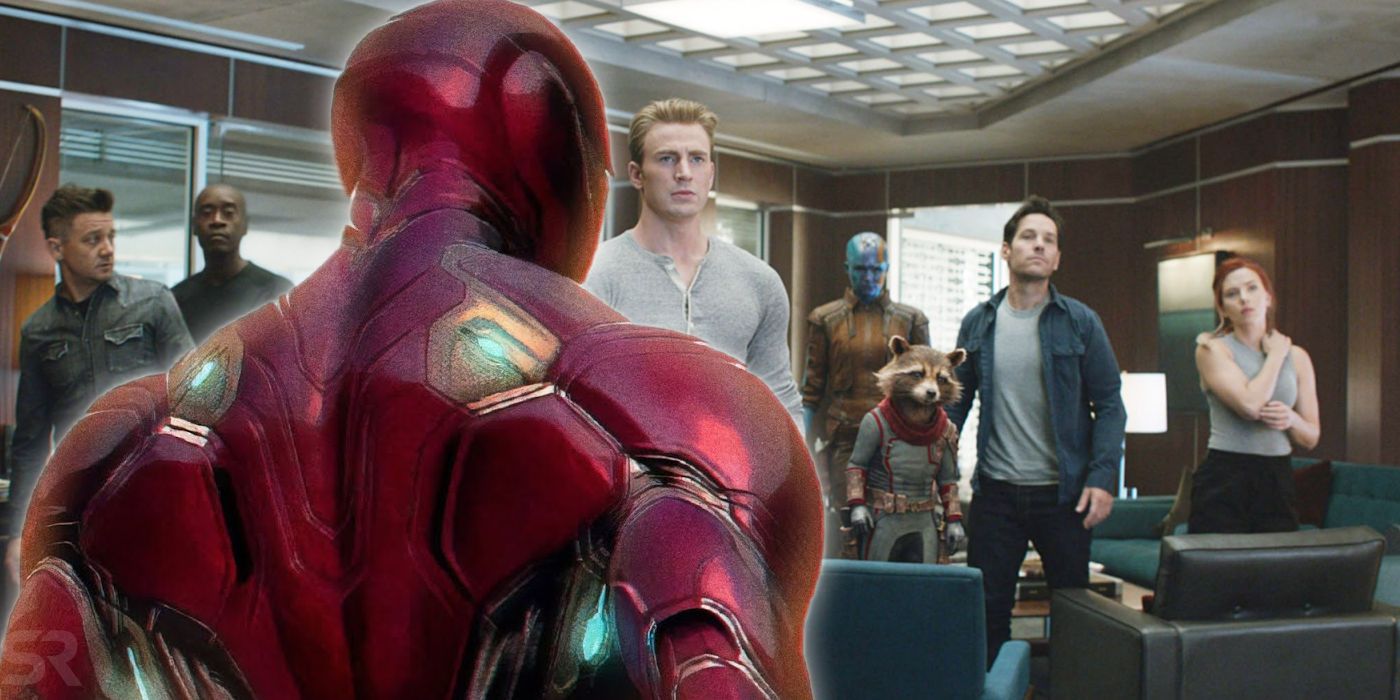Warning: the following contains spoilers for Avengers: Endgame.
Avengers: Endgame sees the Amazing Spider-Man (Tom Holland) return from the dead to take on Thanos (Josh Brolin) and his minions, but in an uncharacteristic move, the hero resorts to killing in the final battle. After the famously dark climax of Avengers: Infinity War, Avengers: Endgame depicts Earth’s Mightiest Heroes successfully reversing the calamitous decimation – albeit five years after the event. Spider-Man is among the many resurrected characters who are instrumental in the Mad Titan’s defeat. Indeed, at one point in the battle, Spidey is charged with keeping the re-made Infinity Gauntlet away from his foes, before he is swiftly waylaid by Thanos’s army.
It is at this point that Peter activates the “Instant Kill Mode” on his Iron-Spider armor. This was a function that was jokingly teased throughout Spider-Man: Homecoming, but Endgame finally reveals its devastating nature. On command, Spidey’s eye-pieces immediately darken, and the suit’s signature waldoes emerge and begin bludgeoning and stabbing everything in his vicinity. A later shot depicts numerous bodies littering the surrounding area as he continues to do battle.
Many long-time Spidey fans are sure to be upset by this development because the wall-crawler, like Batman, has a longstanding no-kill rule. Whilst it’s certainly true that Spider-Man has both considered and committed murder in his comics, these types of instances are notable for several reasons. Firstly, these cases are extremely rare. Secondly, when Spidey has killed in the mainstream universe, these are irregular stories that have been largely ignored by the wider canon. Plus, these tales have also granted Spider-Man’s occasional brutality the necessary weight and anguish for such a guilt-ridden hero. The fact that Spider-Man's killings in Endgame are born out of a running joke across the MCU means that the impact of his decision is immediately negated. And thirdly, the majority of Spider-Man’s murders are largely committed by darker, alternate versions of the character. Certainly, whilst Batman’s morality continues to be questioned in pop-culture, Spidey’s no-kill rule has endured, and remains integral to his character, so much so that it has been a crucial fixture in all his movie adaptations – until now.
Some readers may argue that Spidey’s kills in Endgame don’t count, because his enemies aren’t human and that they are justified by the desperation of the situation. But Peter’s willingness to use lethal force still feels wrong because it clashes with how he has been established in the MCU thus far. In Captain America: Civil War, Peter famously declared that he only suited up to “look out for the little guy,” and the finale of Homecoming saw Spidey shun a membership with the Avengers to focus on his own, more considerate brand of heroism. Indeed, the latter movie was careful to foreground Spider-Man’s gentle nature by ensuring that he didn’t punch anyone in his battles.
Admittedly, Avengers: Infinity War did depict Spider-Man assisting in the defeat of Ebony Maw (Tom Vaughan-Lawlor) by exposing him to the vacuum of space. Yet, depending on your viewpoint, this can be excused by the fact that he only supplied the idea to Iron Man (Robert Downey Jr), and that his only action in the scuffle was to save Doctor Strange (Benedict Cumberbatch) from being sucked out of the spacecraft. Nevertheless, Spider-Man’s actions in Endgame are, incontrovertibly, a progression from this scenario, and they also contrast with how he is usually depicted.
In short, it would seem that the famously merciful Spider-Man has become part of the longstanding trend of heroes casually killing in the MCU. It will be interesting to see how Spider-Man: Far From Home picks up after Avengers: Endgame because, as it stands, this version of Spider-Man is not such a friendly neighborhood superhero after all.



